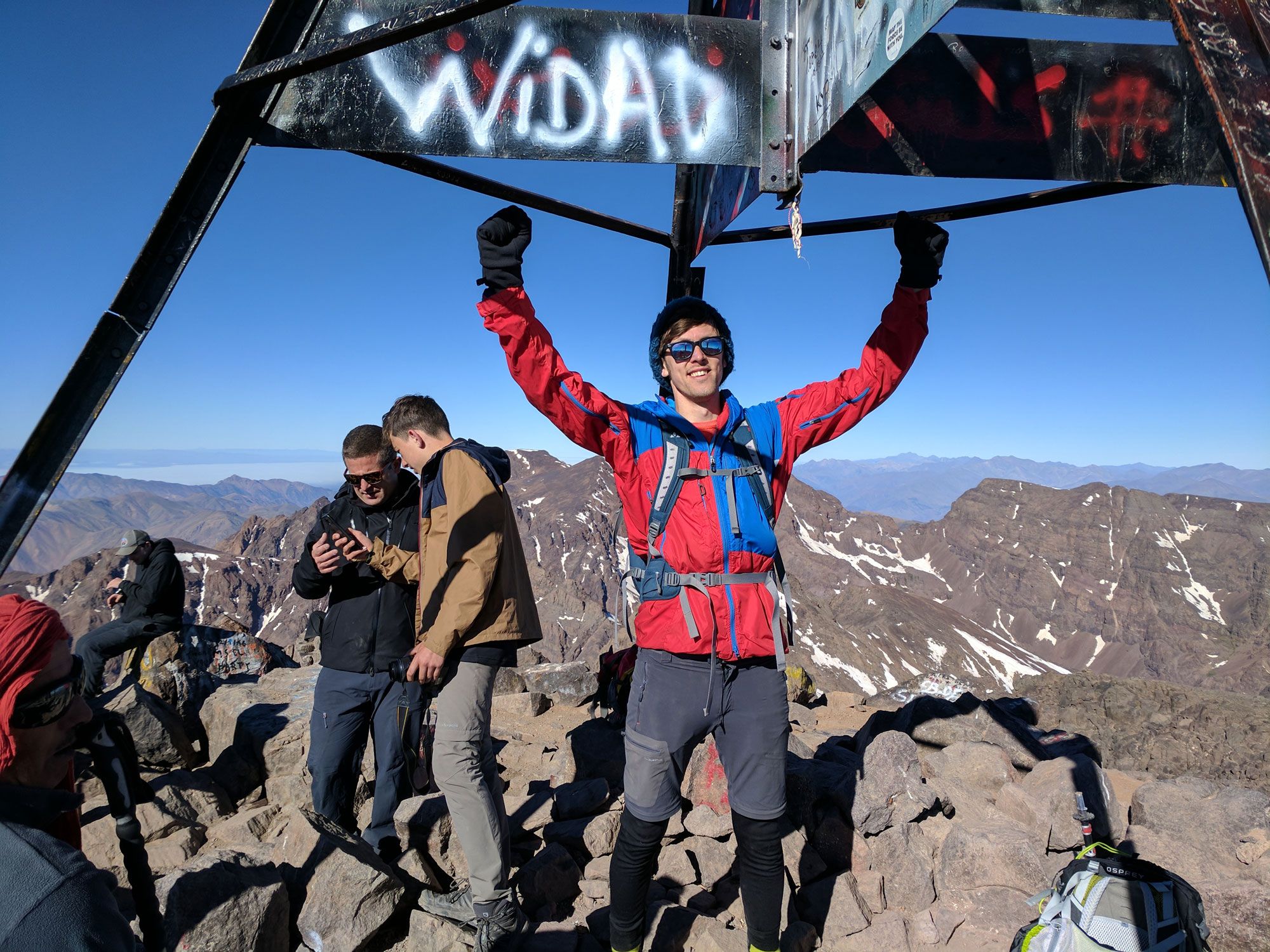With its summit 4,167m above sea level, Mount Toubkal – also known as Jebel Toubkal – is the highest mountain in Morocco, the Atlas Mountains, North Africa and the Arab World.
I know all of this because I regularly bore friends, family members, and strangers minding their own business with tales of how I once went up and down Toubkal in the course of a single weekend. Yes, it can be hard to stop thinking about the first 4,000 metre-plus mountain you’ve climbed; even harder to stop talking about it.

Despite presenting myself, in the comfort of the pub, as an adventurer who knew exactly what he was doing in the high places of Morocco – between you and me, that wasn’t actually the case. I’d signed up to the trip as a way of ticking something off my bucket list and while I loved the experience, I didn’t completely nail it.
Here’s everything I wish I’d known before climbing Toubkal, and some top tips for a good time on the high trails of the Atlas Mountains.
Take snacks (and don’t eat them too quickly)
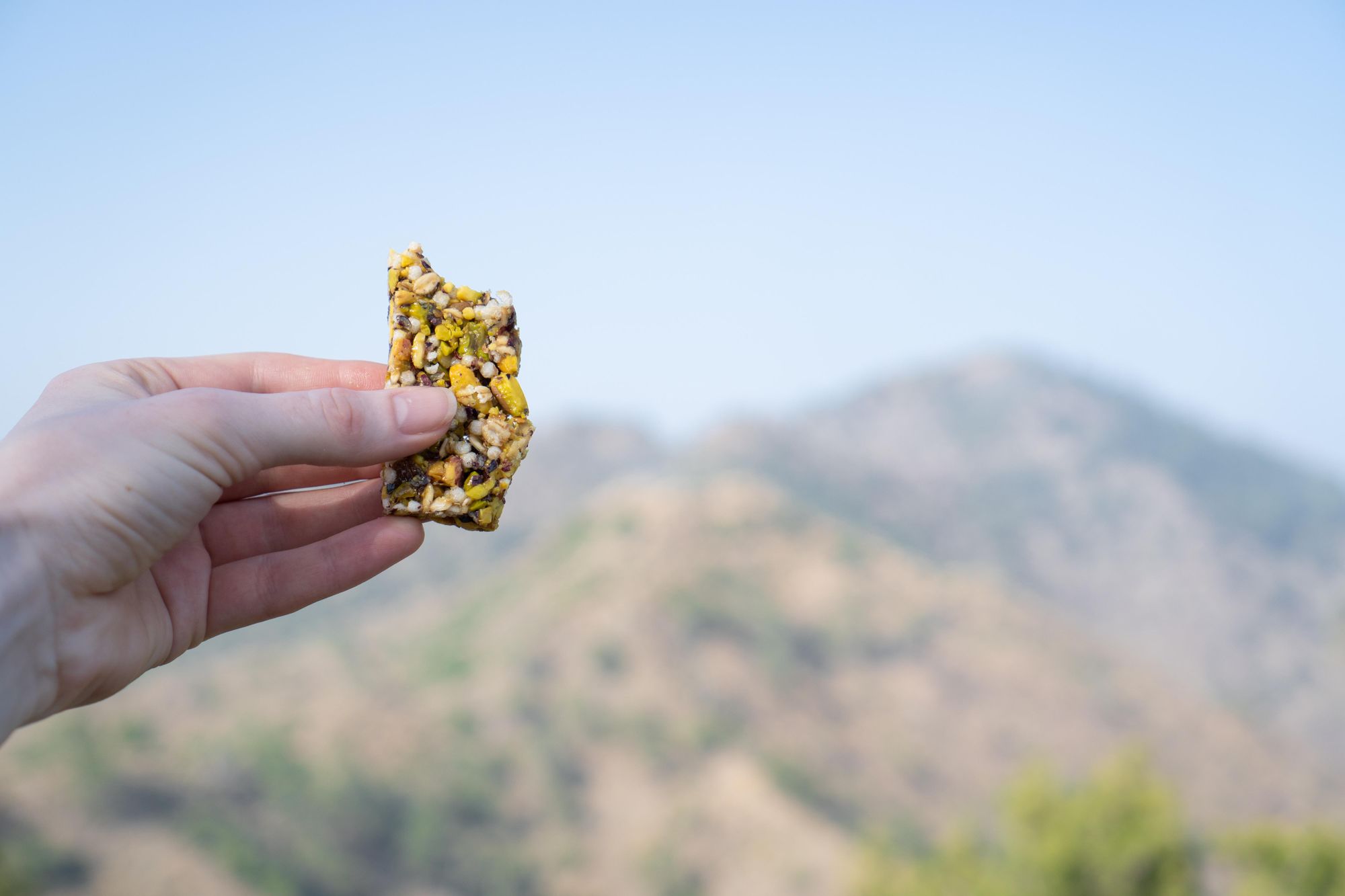
When your energy levels are running low on the mountain, there’s nothing quite like the rush that comes from unwrapping a cereal bar or pouring out a handful of delicious trail mix. Enjoyed at the right time, a tasty edible treat will lift your mood and energy levels. It can do wonders for you on both the ascent and descent.
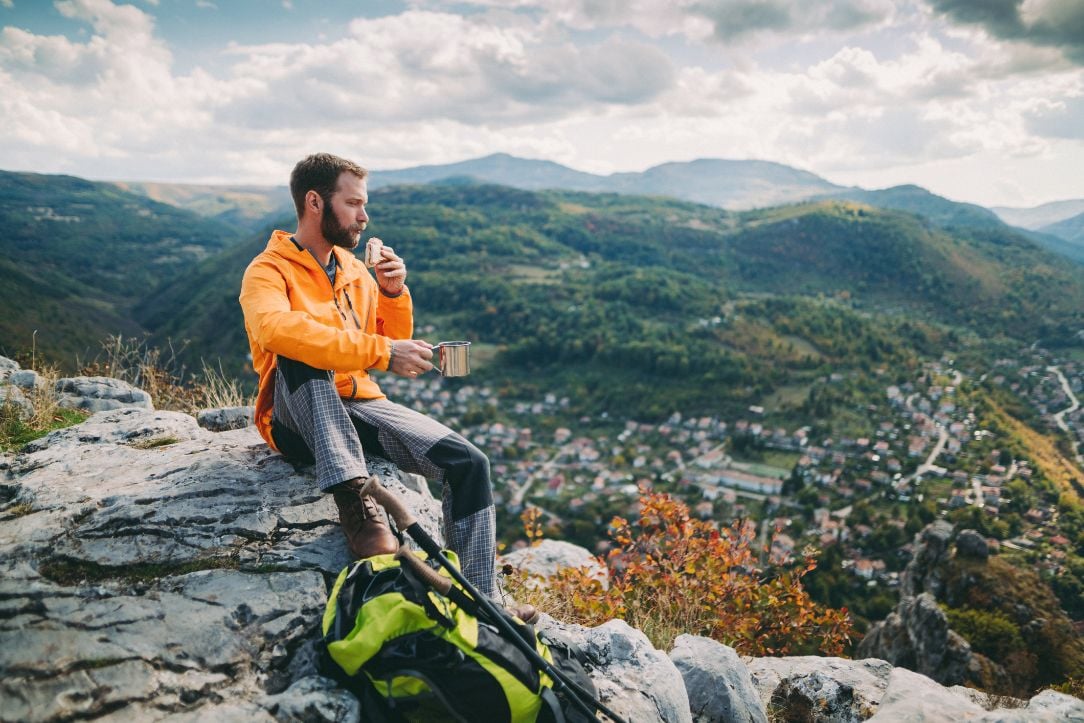
Don’t, however, treat your backpack on the mountain like it’s some sort of infinite snack-making machine. Infinite snack-making machines don’t exist (I’ve checked). Stay disciplined, pace your snack-intake and avoid recreating that ‘confused John Travolta’ GIF two hours in. Speaking from experience, emptying out snack supplies prematurely can make the challenging moments on the mountain that little bit more challenging. I suppose the flip side of this is: bring loads of snacks.
Never underestimate the importance of good socks
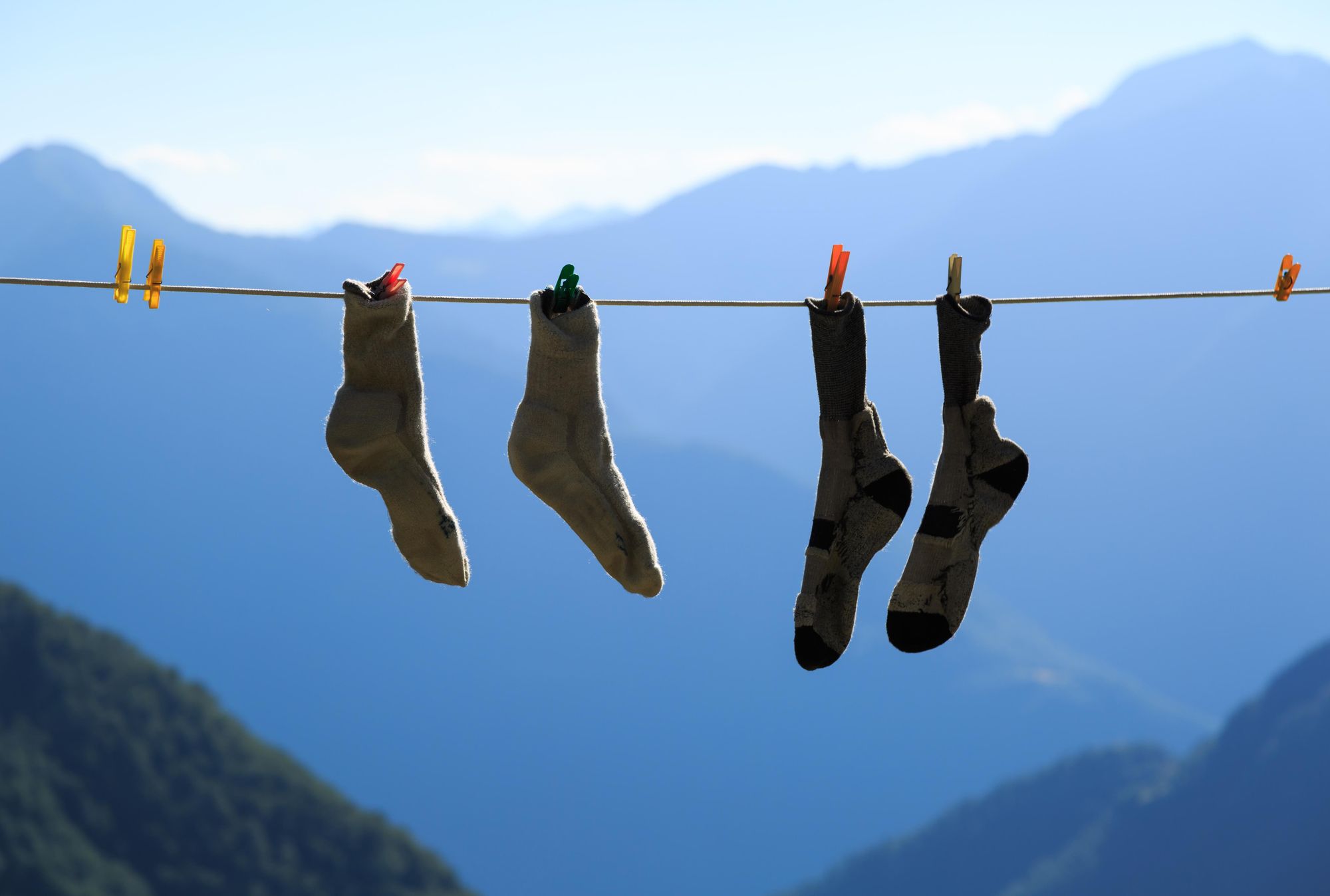
Before my Toubkal adventure, I had naively failed to take into account just how much feet can really sweat when they’re putting in the hard yards in North Africa. With the sun beating down, the mountain paths dusty, and the sheer effort required to get yourself up to the summit and back down again (the views are worth it), you’ll be glad you took along a few good pairs of hiking socks.
Just remember to keep enjoying the incredible views, the brilliant company and the fact you’ve just summited a peak over 4,000m above sea level.
I rocked a cheap pair of thick cotton socks on day one of the climb and, by the time we’d made it to the Refuge du Toubkal (where you spend the night below the summit at 3207m), I was in a state of deep regret. Some generously gifted blister tape helped me get through the rest of the adventure but I definitely could have taken some preventative measures if I’d really stopped to think – for more than a minute – about the importance of good socks. Also, take one more pair than you think you’ll need. I nearly caused an air traffic incident on the flight home because I’d run out of socks, and had to don a stinky pair I’d been wearing on Toubkal.
If you're looking for kit recommendations? Darn Tough makes some of the best hiking socks in the game. Their products are made from Merino Wool, are anti-blister and wick away moisture naturally.
Break in your new boots
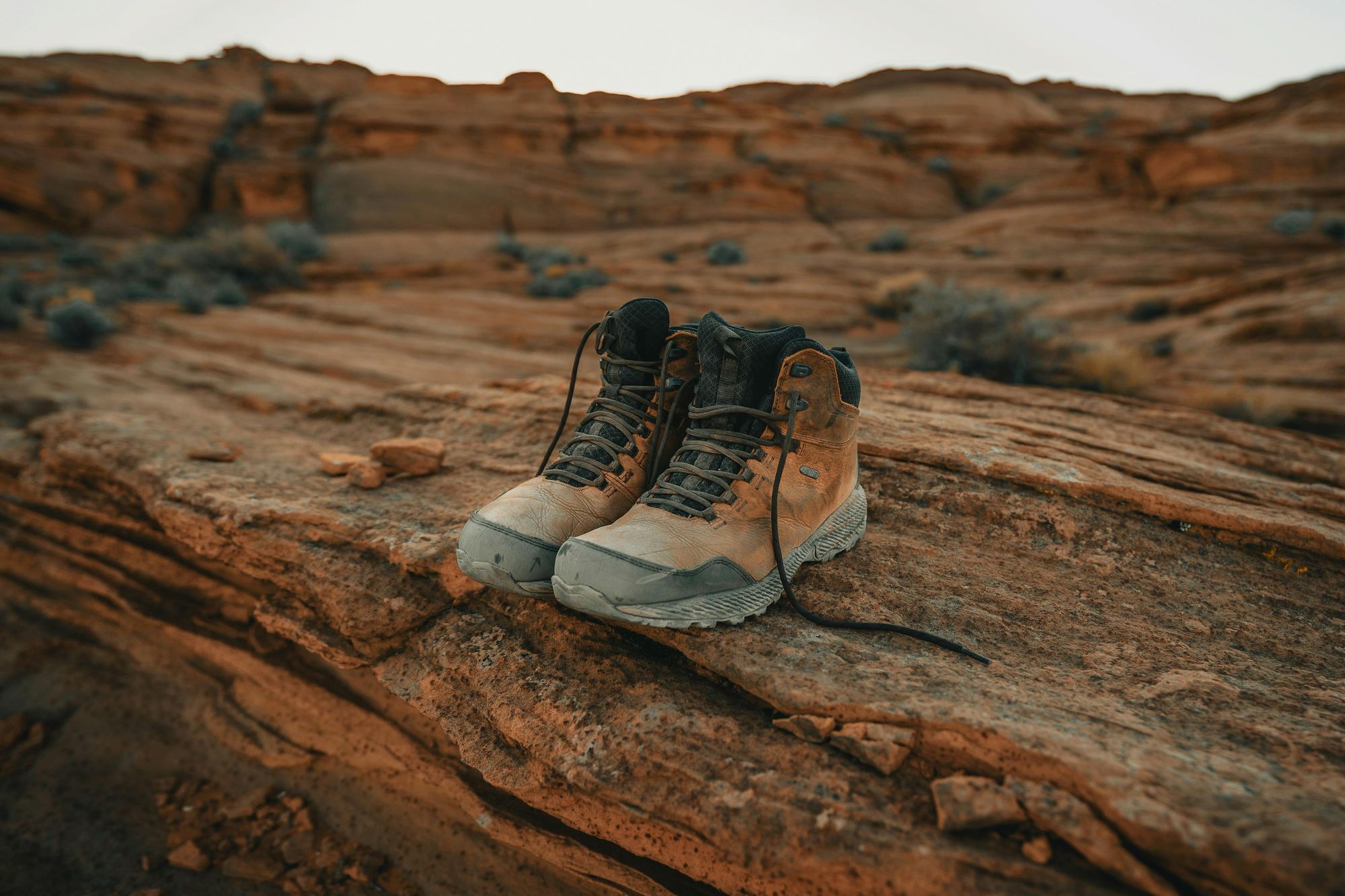
Staying in the foot area for a little longer (with apologies), I seriously recommend ‘breaking in’ new boots at home before travelling to Morocco. This is a process that helps your boots gradually mould to the shape of your feet, softening up the leather or fabric and ensuring the boots flex at appropriate times when you’re walking.
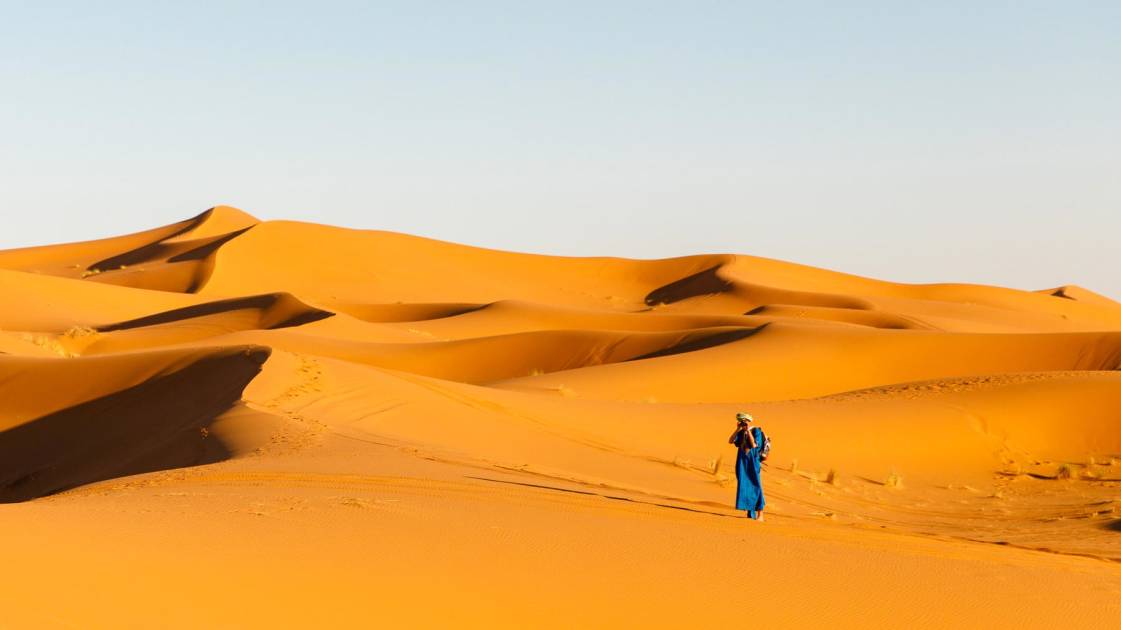
It’s another great way to avoid blisters and it's advice I wish I’d taken on board before starting my Toubkal climb. My box-fresh look might have earned a few nods of approval from the style police, but it did nothing to enhance my comfort on the mountain. Top tips for breaking in new boots include wearing them around the house, trying them out on shorter walks, and going for a countryside stroll with a loaded pack. Avoid quick internet hacks like using a hairdryer on them, soaking them in water or freezing them.
Prepare yourself mentally and physically
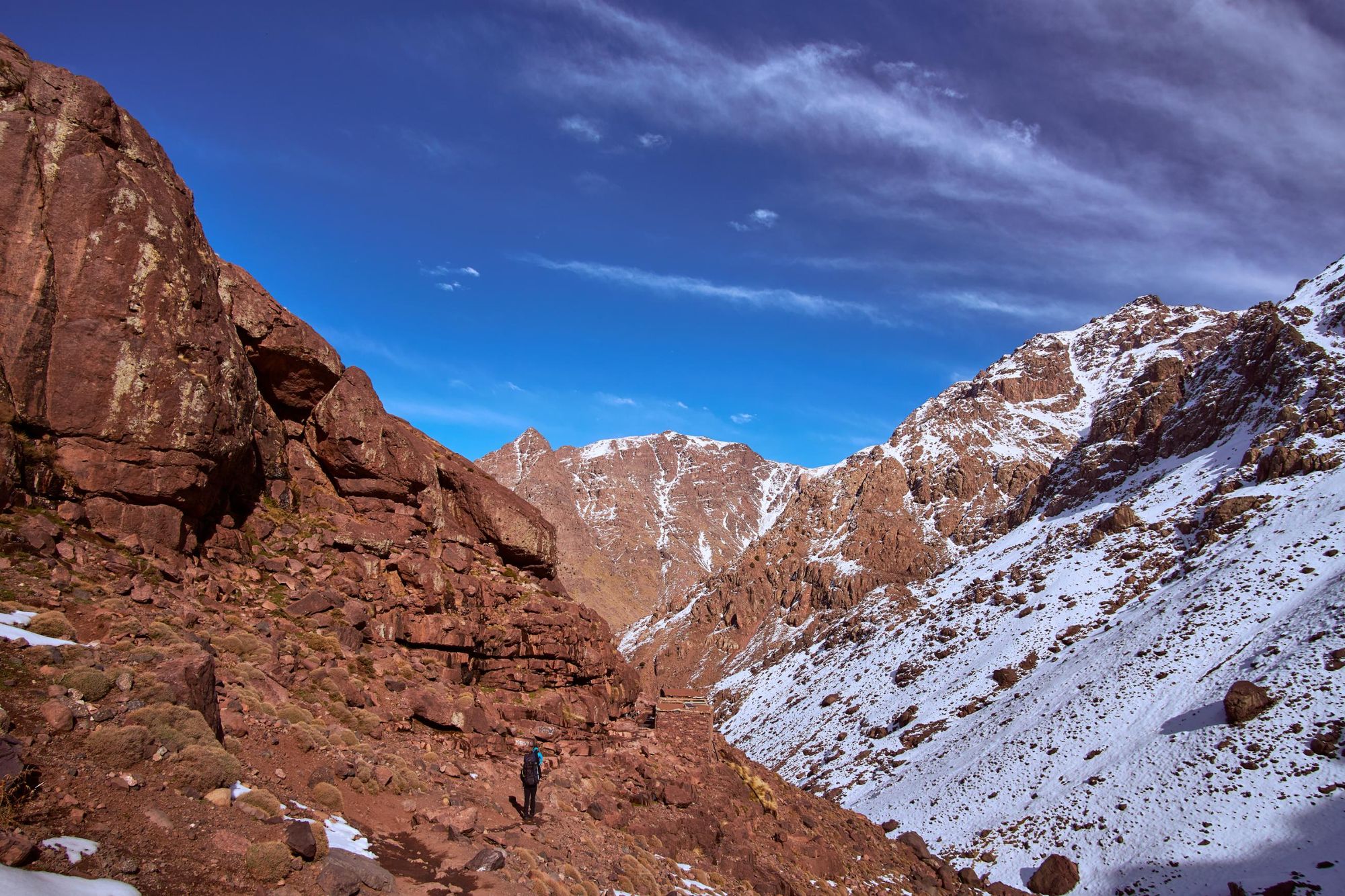
Toubkal is a big mountain. If you’re going to climb up and down it over the course of a weekend you’ll need to go at a fairly decent pace. On the first day of the climb, you’re walking 6.2 miles (10km) and racking up 1,540m of elevation. On the second day, it's a full 10.5 miles (17km); 1,130m up, 2,530m down.
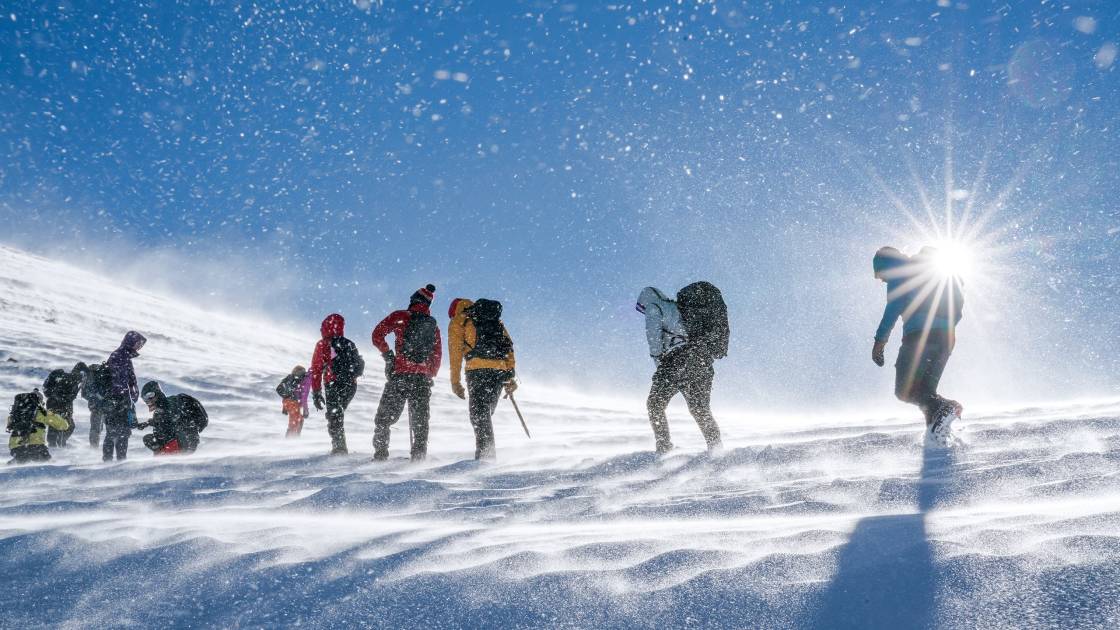
Needless to say, this isn’t your standard walk in the park. The days can be long, and you’ll have to call on your old friend ‘stamina’ in order to keep putting one foot in front of the other. Mentally speaking, the way down can be harder as you’ll feel like you’ve already achieved what you set out to achieve (and you’re going over old ground, albeit with a view in a new direction). Just remember to keep enjoying the incredible views, the brilliant company and the fact you’ve just summited a peak over 4,000m above sea level. Remember to smile.
Keep your head torch close
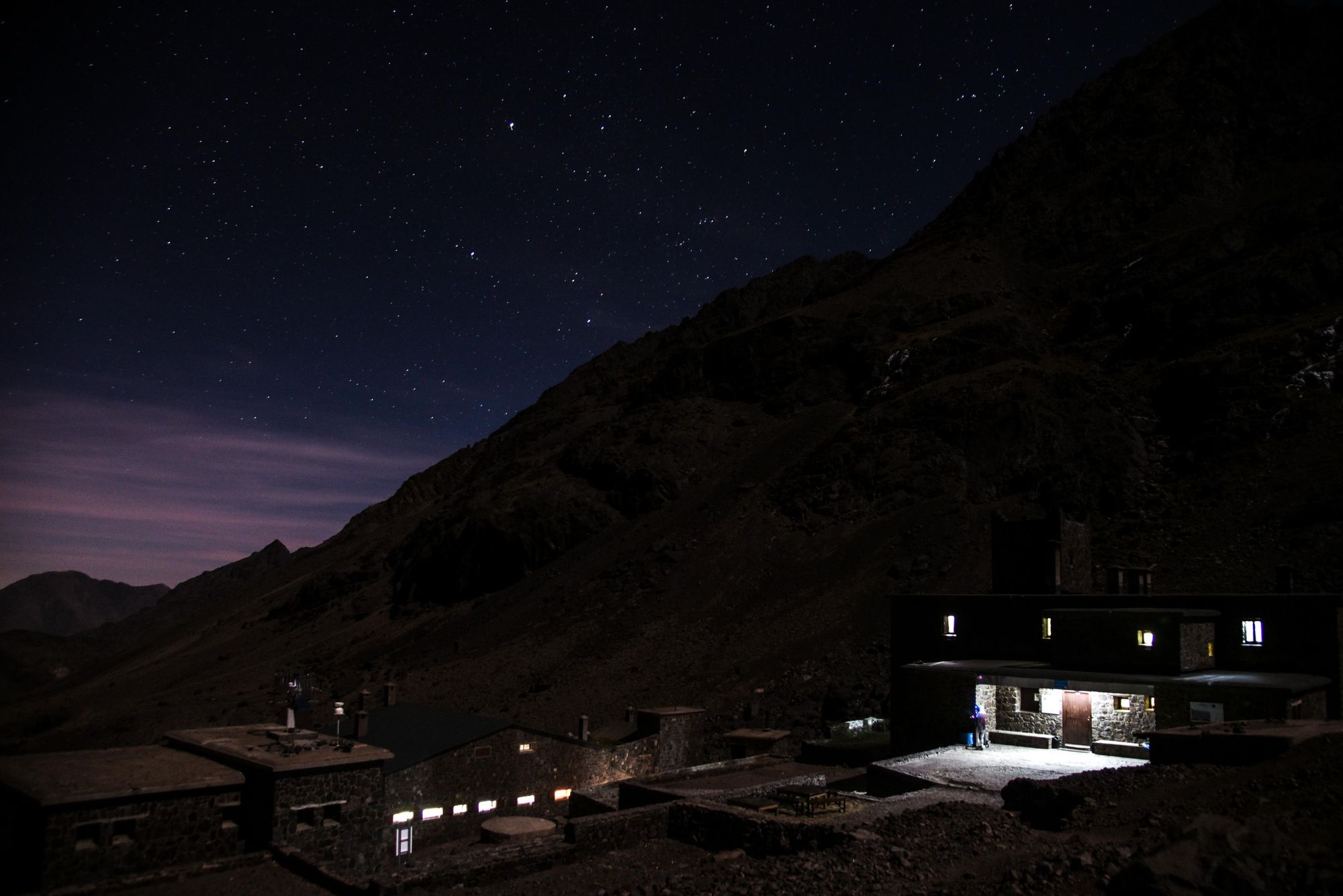
Knowing exactly where your head torch is, and being able to access it easily, might sound like overly simplistic advice. But when you’re desperately scrabbling around for it in the darkness of the mountain refuge, you’ll think back on this section and kick yourself. Refuge du Toubkal might be a step up on your standard Scottish bothy in terms of amenities, but its size can also make it trickier to explore after dark.
When I climbed Toubkal, I was part of quite possibly the chattiest and friendliest tour group in all of recorded human history.
The multi-storey refuge was built in 1938 and houses four dormitories. The biggest of these sleeps 27 in a relatively tight space (if you’re a light sleeper, you’ll be wanting to take some earplugs). Just over 80 people can stay here in total, making for a fun but crowded atmosphere in the dining area when it’s at capacity.
The refuge’s bathroom has two basic showers and three toilets, so you’re reasonably well catered for on that front - but the corridors are not, in my experience at my least, well-lit. Hence: head torch. More importantly than helping you find your way to the toilet in the night, though, your head torch will come into its own when you leave the refuge well before daybreak in order to catch epic sunrise views up on the summit. Keep things efficient. Keep your mountain path well-lit. Keep that head torch close.
Respect the altitude (you’re higher than you think)
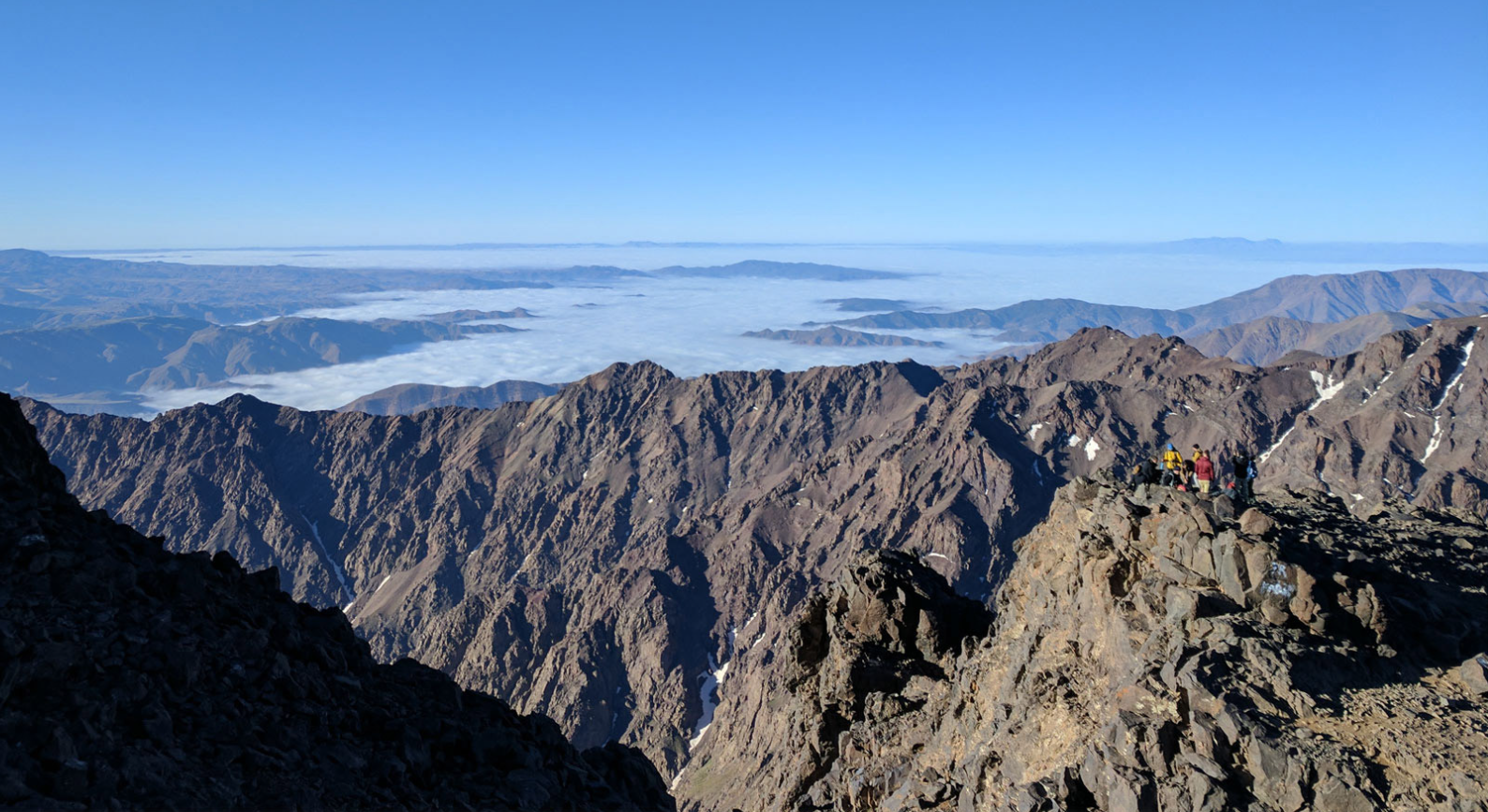
Just because the Atlas Mountains aren’t the Himalayas, and Toubkal isn’t Everest, doesn’t mean altitude sickness isn’t a thing in these parts. The reality of just how high we were hit me on our second morning on the mountain when, a few hours after departing from the refuge, a member of our climbing party started showing signs of altitude sickness. With the help of one of our excellent mountain guides, she quickly and safely returned back to the refuge to recover. No harm done.
This incident stayed with me for the rest of the climb, though. Something as important as ‘the availability of oxygen’, and how my body would respond to there being less of it, hadn’t even crossed my mind beforehand. After all, it’s not like we were on Annapurna. Altitude sickness couldn’t happen on this mountain, surely? As it turned out, it most definitely could.
If you feel unwell on the mountain, tell someone you’re with and rest. Even if you’re close to the summit, it’s always okay to stop or turn back.
What I would say to anyone thinking about taking on Toubkal is that it’s worth gaining some awareness of altitude sickness before signing up. Knowing the signs to look out for in yourself and others is sensible. The guides you’re with, of course, have a sharp sense for this kind of thing but you’ll make their job easier if you’re on the lookout too. The main symptoms include a headache, loss of appetite, feeling or being sick, feeling tired or exhausted, dizziness and difficulty sleeping.
If you feel unwell on the mountain, tell someone you’re with and rest. Even if you’re close to the summit, it’s always okay to stop or turn back. Painkillers or anti-sickness meds, and being at a lower altitude, can help. Respect the mountain, respect how your body’s feeling, and go at your own pace.
Drinking alcohol before or during a big climb should also be avoided, and can dehydrate you. This is a proper mountain we're talking about - so be smart.
Take some cash
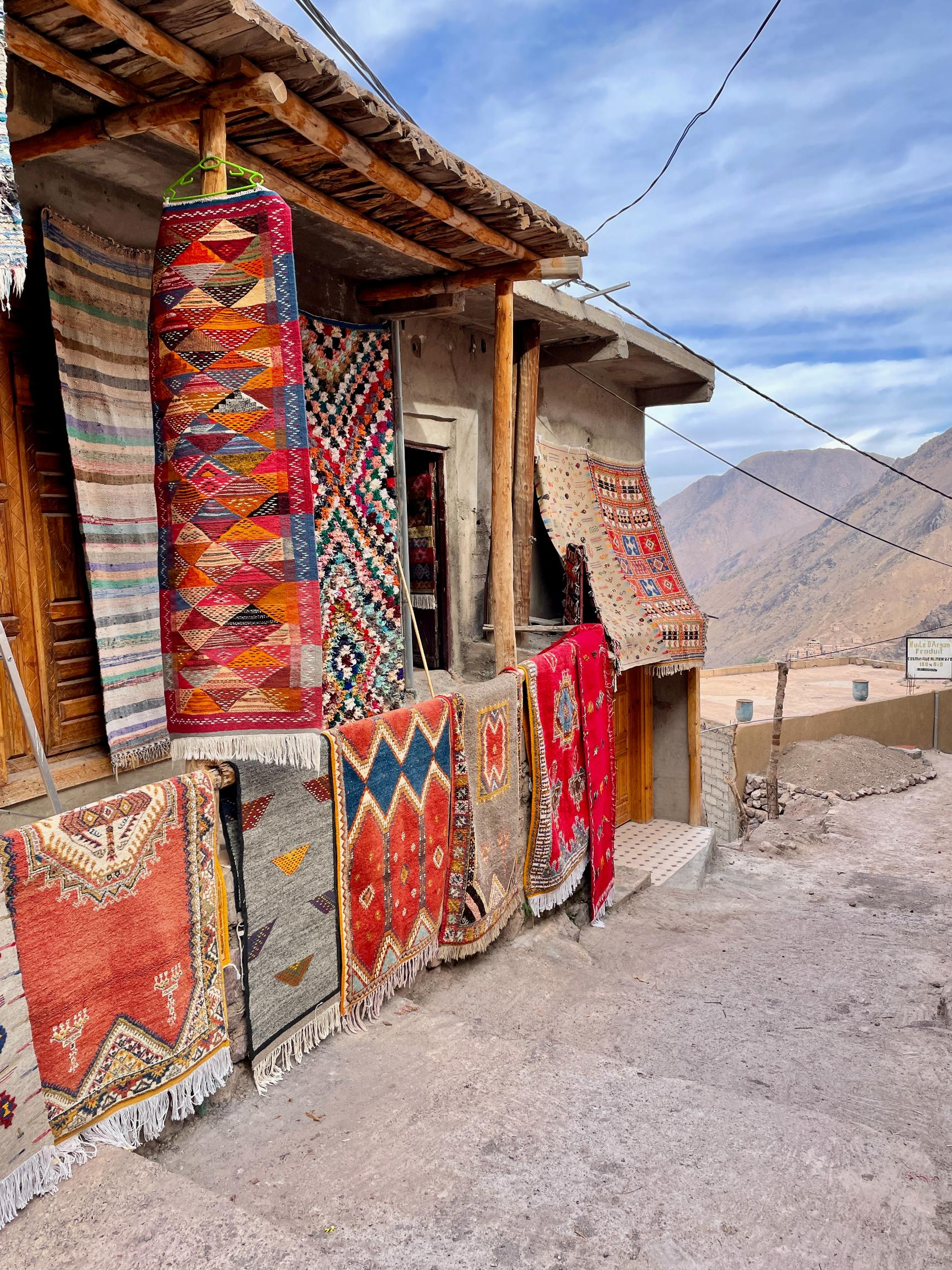
It’s unlikely you’ll be doing much shopping on Toubkal. There isn’t, as far as we know, a Westfield in the Atlas Mountains. There are, however, some lovely souvenir stalls on the trail; selling local handcrafted items. Contactless card payment opportunities are, unsurprisingly, rare so it makes sense to have some cash on you. If you are looking to buy something from one of these friendly vendors, we would – for obvious reasons – recommend doing so on the way down rather than the way up.
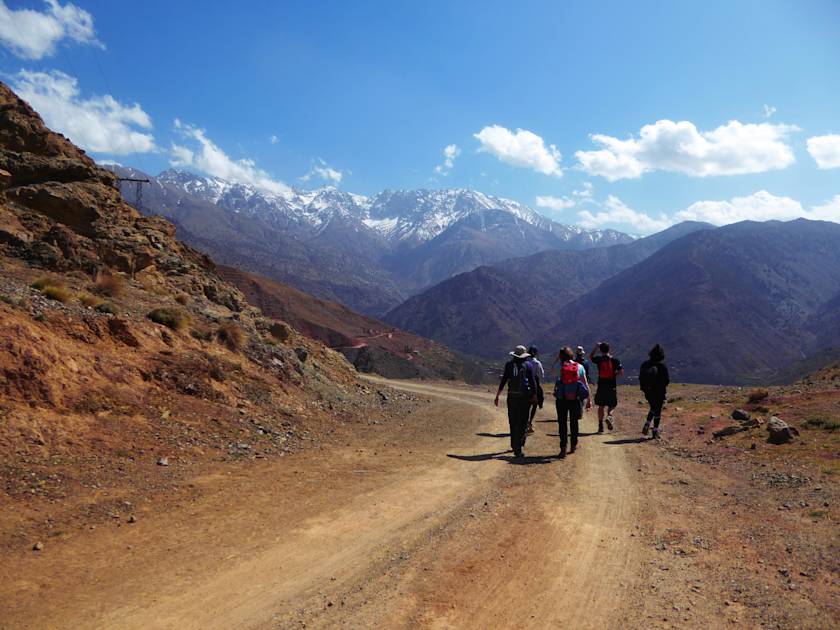
Perhaps more important than simply being a way to purchase gifts for loved ones back home though, cash is also a nice way to show some appreciation for your local mountain guides at the end. Not only have they helped get you and your stuff up the mountain, they’ve also had to spend much of the last 36 hours answering your various questions about the area’s terrain, wildlife, food, culture and more.
When the whip-round for our support team took place at the bottom of the mountain, I realised my contribution would be paltry to say the least. Fortunately, someone in our party was able to cover my share of the tip and I was able to pay them back at the first opportunity. You can save yourself that awkwardness though by having some cash on you.
Embrace conversation
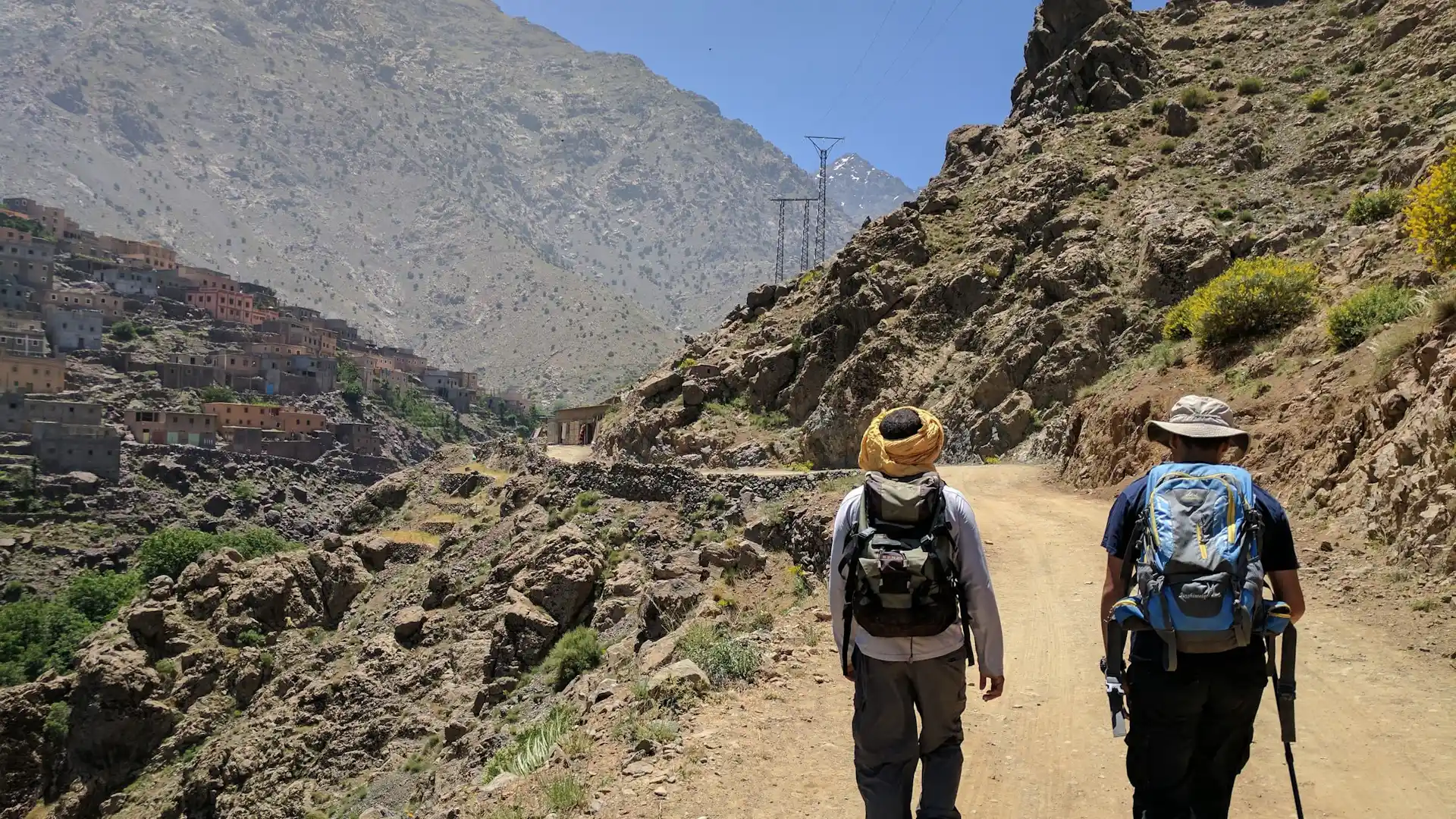
When I climbed Toubkal, I was part of quite possibly the chattiest and friendliest tour group in all of recorded human history. It made this final recommendation easy. That being said, I’d encourage anyone – even the most introverted group of adventurers – to embrace the chance to share stories and moments with total strangers. Because, let’s face it, as a backdrop for conversation goes, the Atlas Mountains take some beating.
Learn something about other people, be inspired by the trips they’ve been on, and let them learn something about you too. You’re all united by a love of adventure, and the fact you’re literally – at that very moment – in the process of climbing a 4,000 metre mountain together. Scaling a huge lump of rock is one thing but, as is the case with so much in life, it’s the connections you forge along the way that can make it extra special.
Read More:
- Taking on Mt. Toubkal: A Photo Story
- The Guide to Climbing Mount Toubkal
- How a Murder Suspect Became the First Tourist to Climb Toubkal
- Atlas Mountains: Your Adventure Guide
Inspired? Climb Mount Toubkal and reach North Africa's high point!


